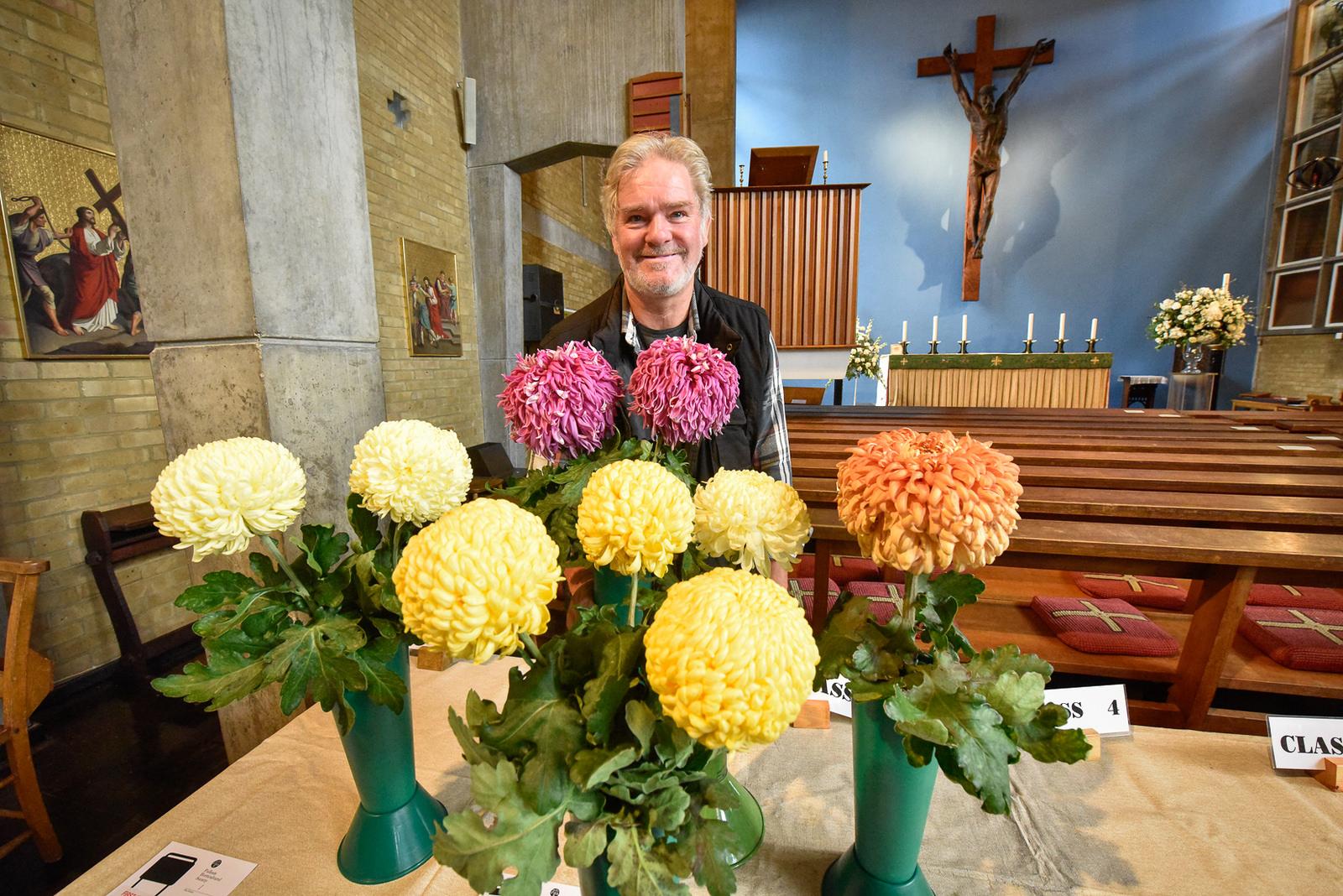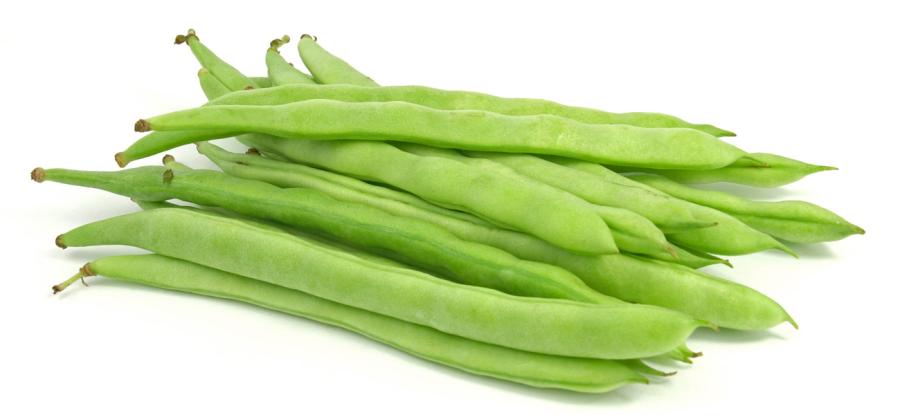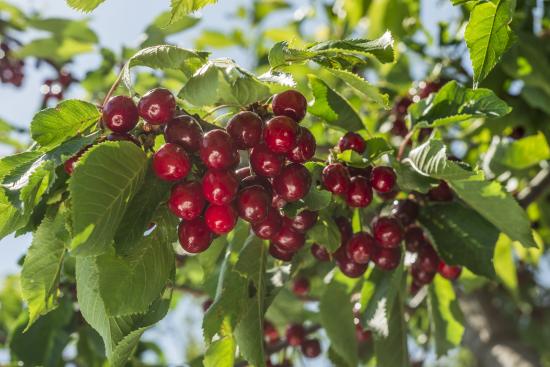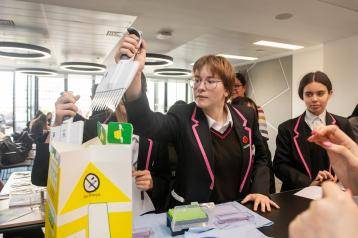
Fulham Horticultural Society member Stewart Whitten with his chrysanthemums
Dahlias ready to bloom and marrows competing for ground? Why not showcase the fruits of your spring and summer labours at this year’s Fulham Horticultural Society autumn show?
Whether displaying homegrown blooms and vegetables, or bringing tasty goodies to the table, the autumn show on 9 September is set to celebrate the abundant produce of the season.
From chrysanthemums and courgettes, to pot grown pelargoniums, potatoes and rhubarb, there are more than 50 growing classes to enter.
And if cooking and crafts are more up your street, there are prizes for cake-making, jams, bottled fruits and even photography and Christmas card making.
The society’s chairman Eddie Robinson said: “Fulham Horticultural Society is the last remaining horticultural society in central London and we continue to appeal for more growers to become members.
“So pass the word to friends and neighbours.”
The society, set up in 1924, is open to all, and green-fingered residents can enter the show if they plant and tend their gardens or allotments within a five mile radius of Fulham Old Town Hall.
There are also classes for children to show off their creative skills.
The show takes place at St. Etheldreda's Church, Fulham Palace Road, with entries welcome from 10am and judging from noon.
Visitors to the show can peruse the displays and enjoy tea and cake from 2.30pm.
To give yourself the best chance of winning a prize, or simply keeping your plants in tip top condition, the gardening experts at the Fulham Horticultural Society have compiled this gardening advice for August.
Visit the FHS website to join the society or find out more about the open Autumn Show on 9 September.

Fulham Horticultural Society’s August to-do list

- Continue with harvesting vegetable crops and picking runner beans to maintain cropping well into the autumn.
- Continue with lifting potatoes. Prepare to lift onions towards the end of the month. Wait until the tops begin to fall over as this indicates that the bulb has stopped swelling. Dry them before ‘stringing’ and putting into store. These bulbs will then keep until next March.
- Start to thin apples and pears down to one or two fruits per cluster. The apples and pears will soon begin to colour up.
- Harvest the earliest grapes such as ‘Black Hamburg’. If not already done, carry out the last thinning of the bunches on late grapes.
- Make the last of any outdoor sowing seeds to provide a late harvest for this season - radishes and lettuce will still produce a crop.
- The end of this month signals the time to begin summer pruning your apples and pears grown as cordons, espaliers or fans. For trees and bushes, leave these until the winter to prune. Start with the pears and then move on to apples. The purpose of summer pruning is to encourage the development of fruit buds for next summer.
- August is the last month to prune stone fruit trees (plum, apricot, cherry and peach), so complete the task as soon as possible. You want to aim for an open structure of branches and remove any that cross over so they don’t damage each other.
- Trim any box hedging before the first of the frosts arrives. Remember the phrase, “Make the first cut after the last frost and the last cut before the first frost”.
- Blossom end rot can affect aubergines and tomatoes causing black sunken blotches on the skin of the fruit. Usually due to a lack of calcium, the disease can be stemmed by amending your watering habits to ensure the calcium found in the soil is fed through the water to the plant – so water regularly and don’t allow the soil to dry out. Discard any damaged fruit.




